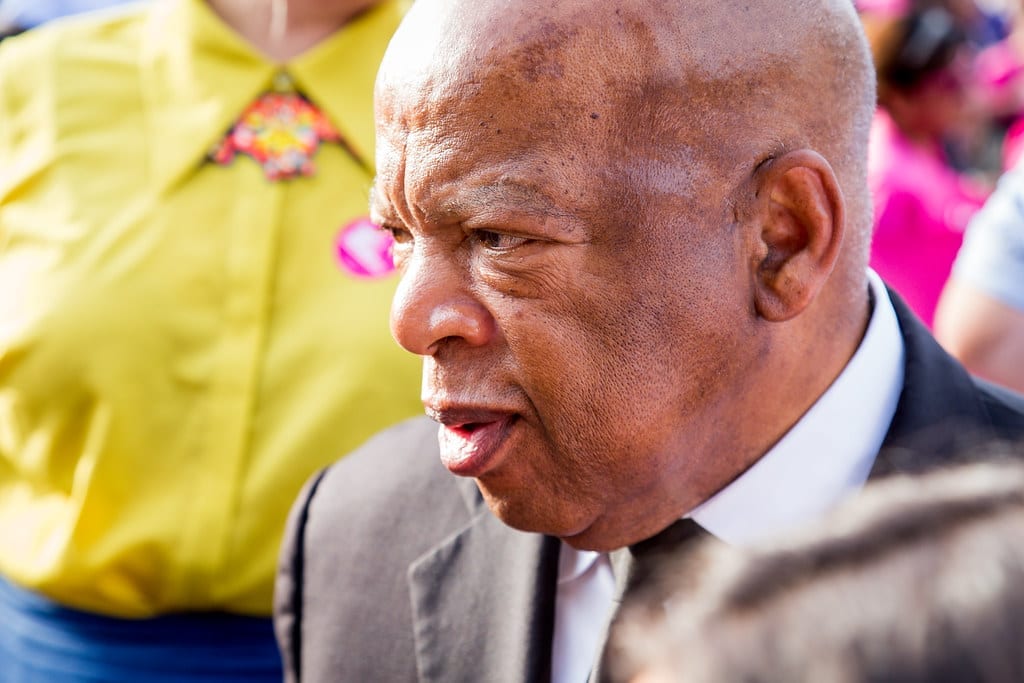CCI pays tribute to John Lewis
The University of Tennessee, College of Communication and Information pays tribute to John Lewis.

Photo of Representative and Civil Rigths activist John Lewis.
Picture this: Mar 7, 1965, the Edmund Pettus Bridge, 600 peaceful marchers and John Lewis at the front.
John Lewis was more than a civil rights activist. Lewis was an inspiration, he was a front-runner for change, he was a man of faith and he was loved by many.
The University of Tennessee’s College of Communication and Information hosted their keynote panel Wednesday afternoon. The panel, a part of Diversity and Inclusion Week, was a tribute to the life of Civil Rights activist and Congressman, John Lewis.
Lewis began his activism at a young age, participating in sit-ins, protests and marches. He called for equal rights under the law, voting rights and desegregation. However, Lewis didn’t end his activism once the bills were passed. Lewis became a House representative for the fifth congressional district of Georgia in 1987. He served, representing most of Atlanta, until his death on July 17. John Lewis is remembered and honored as a legendary figure and an icon of change.
In Honor of John Lewis
CCI’s panel honoring Lewis consisted of three individuals that worked with Lewis at points in their lives and admired him greatly. Reverend Dr. Harold Middlebrook is a Civil Rights pioneer and retired pastor of Canaan Baptist Church of Christ. Phyllis Nichols is President and CEO of the Knoxville Area Urban League. And Theotis Robinson is a Civil Rights pioneer and retired Vice President of Equity Diversity for the University of Tennessee.
All three have worked their entire lives toward equality and civil rights among communities. They shared stories of Lewis and spoke about his accomplishments.
Theotis Robinson states that he was at lunch counter sit-ins in Knoxville, while Lewis was at sit-ins in Nashville. He compared his experience a Sunday picnic to Lewis’s.
“I was moved by his courage. If you don’t think it takes courage to march into a group of Alabama statesman with dogs and clubs and teargas, try it yourself and see what kind of courage it takes to do what he did,” Robinson said.
Alongside Lewis
Nichols recalls working with Lewis to pass the Affordable Care Act. She said he not only had courage when he was young but when they walked through protesters of the bill. Lewis led the others through the protesters and was spat upon along the way.
“I saw the hatred in people’s eyes, but I also saw the dignity of this diminutive man to lead a group of advocates to the capital,” Nichols said. “It amazed me.”
Middlebrook added how he would take Congressmen around the South every year to various civil rights movement locations, in order to educate them on the true happenings of the South. He also mentioned that Lewis was always getting into “good trouble.”
“He reminded everybody, ‘You can’t rise if you got to keep your foot on somebody else’s neck,’ ” Middlebrook said.
Passing the Baton
The panelists also shared insight on how to continue to progress the works of John Lewis. While all three had different messages, they all had one thing in common. They encouraged people, specifically young people to vote. Robinson compared carrying on Lewis’s legacy to passing on a baton.
“You pick up John Lewis’s mantel. You pick up what he was or and we move it on. It’s like a race, like a relay and a track where you pass off the baton to the next runner coming behind you,” Robinson said.
For information about future Diversity and Inclusion Week sessions visit CCI’s website.
Edited by Madalyn Torres
Featured Photo Courtest of Creative Commons

